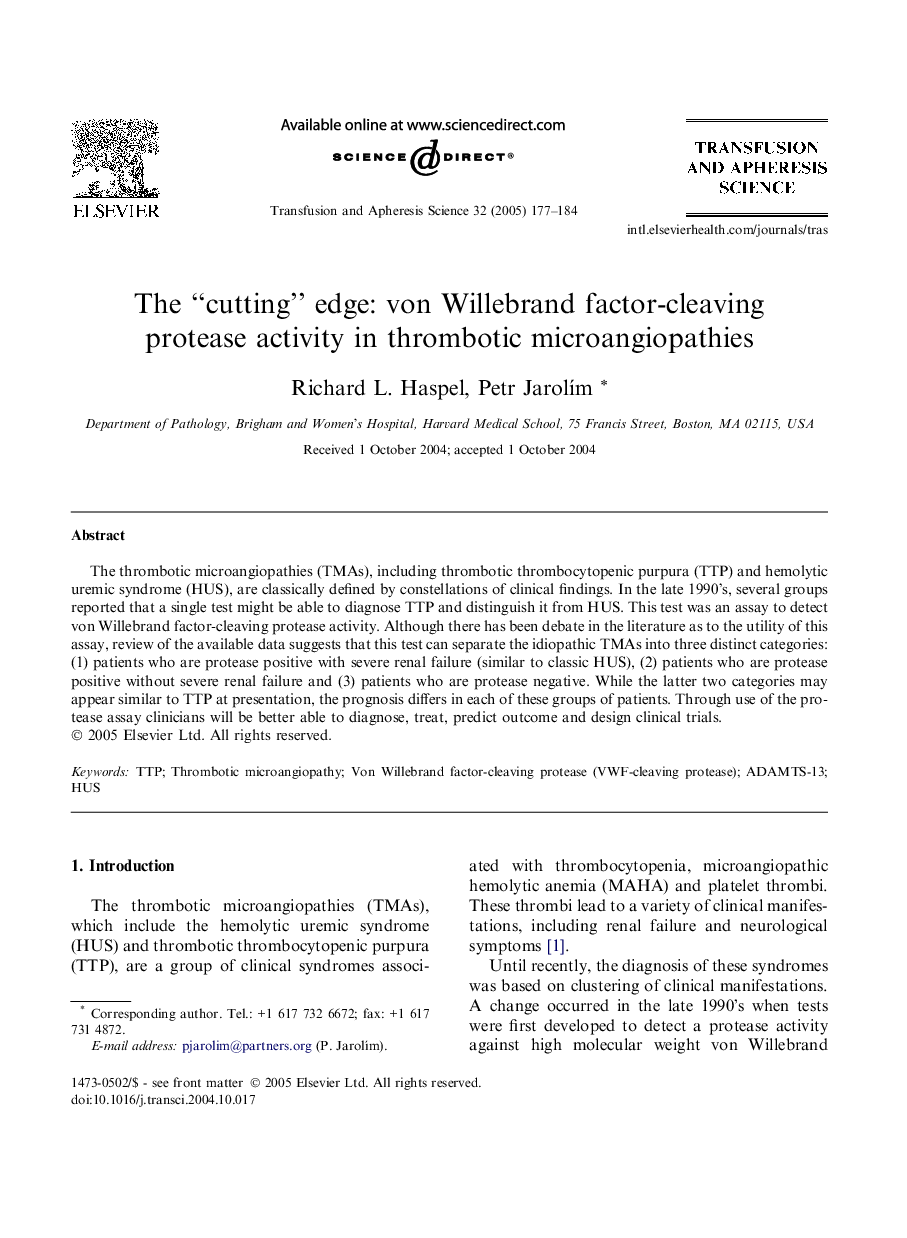| Article ID | Journal | Published Year | Pages | File Type |
|---|---|---|---|---|
| 9258869 | Transfusion and Apheresis Science | 2005 | 8 Pages |
Abstract
The thrombotic microangiopathies (TMAs), including thrombotic thrombocytopenic purpura (TTP) and hemolytic uremic syndrome (HUS), are classically defined by constellations of clinical findings. In the late 1990's, several groups reported that a single test might be able to diagnose TTP and distinguish it from HUS. This test was an assay to detect von Willebrand factor-cleaving protease activity. Although there has been debate in the literature as to the utility of this assay, review of the available data suggests that this test can separate the idiopathic TMAs into three distinct categories: (1) patients who are protease positive with severe renal failure (similar to classic HUS), (2) patients who are protease positive without severe renal failure and (3) patients who are protease negative. While the latter two categories may appear similar to TTP at presentation, the prognosis differs in each of these groups of patients. Through use of the protease assay clinicians will be better able to diagnose, treat, predict outcome and design clinical trials.
Related Topics
Health Sciences
Medicine and Dentistry
Hematology
Authors
Richard L. Haspel, Petr JarolÃm,
